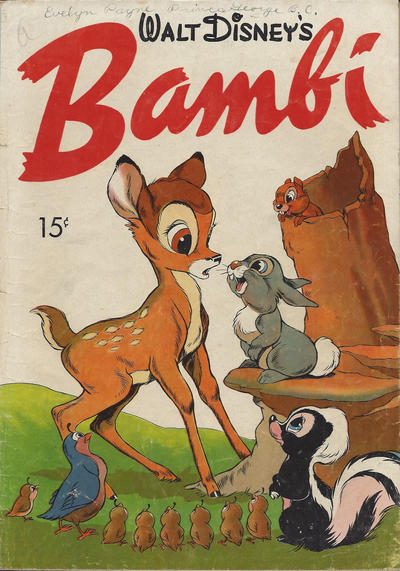0070: Four Color #12 (1942)
In our study, Dell's long-running series Four Color has created more than a few problems. On the conceptual level alone, there is some debate as to whether Four Color is actually a series of 1331 issues or is better understood as a series of one-shots. That is not a minor issue for us, because if we do characterize it as a series of one-shots, that completely changes our picture of the creation and cancellation of titles in the early part of the industry. In practice, I have found that some dealers keep all their Four Colors together and others break them up, so that this issue might be filed under B while the previous issue (featuring Smitty) would be under S. We have tended to treat Four Color as a single series to date, but we are open to arguments that we shouldn't be.
This particular issue of Four Color, the earliest one in the corpus, raises a whole host of other problems - good problems, the types of problems that this project is precisely designed to capture.
Lets' just talk about the most obvious one: Four Color #12 is a "graphic novel".
Four Color #12 was released in 1942 to coincide with the release of Walt Disney's fifth animated feature, Bambi. The comic is entirely based on the film, from the modelling of the characters to the plot. It is sixty-eight pages in total (including covers) and sixty-four of those pages consist of a single story. While there is no consensus on the minimum page count of graphic novels (Art Spiegelman's In the Shadow of No Towers is probably the shortest book that is regularly termed a "graphic novel"), it is clear that many "graphic novels" were forty-eight pages, as, for example, Marvel's self-declared Graphic Novels in the early-1980s. By any reasonable standard, then, Four Color #12 is a graphic novel. Of course, there are no reasonable standards for that particular term.
A few other items of note: No creator credits, of course. There is no advertising in the comic at all, neither external nor internal, and very little information other than the indicia. The vast majority of the pages are standard six-panel grids, but there are some interesting exceptions later in the book, particularly during the forest fire. It is a strikingly legible book, very easy to follow, which is a function of the intended audience to be sure.
One final interesting note is that the copy that we have differs from both versions that are reported in the The Grand Comic Book Database. Their indexed copy gives the title "Four Color Comic" and the number (12) under the Ten Cent price, but ours does not. The GCD has another cover that is like ours, but which costs 15¢ where ours cost a dime.

